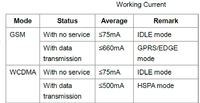fa_a2z
Newbie level 6
I am working on a buck-boost IC circuit design in which the load current requirement outweighs the capability of a single IC. Since I dont have the freedom for alternative, I'm thinking of connecting two IC circuits together in parallel to increase the current, which brings the following question into mind:
What would happen if there is a voltage mismatch? a few hundred milivolts? a few volt? So i did some simple simulation (see attachment) to see the effect of placing different batteries in parallel. By applying KVL and KCL, i got the current across R1 as 1.351A. This results in 2.5673V of effective voltage as seen in the attachment.

Going through similar thread like the following, i still could not find what i'm looking for, (or maybe its there, but i'm too dumb to figure it out):
https://www.edaboard.com/threads/71527/
My question is the following:
Is a simple KVL and KCL all it need for this kind of problem or am I overlooking the IC capabilities?
Is this practised in the real world? (connecting two IC circuit output in parallel to increase current)
In the case of car battery jumping, the battery is designed chemically to be rechargeable, would the IC really explode if i do the same?
Even if there is no voltage mismatch, will it still be safe?
I also did a simulation using the IC in question, but cannot put it here right now. it remains the similar however (Vout shares the same node, IC grounds share the same node)
Best regards,
Faizal
What would happen if there is a voltage mismatch? a few hundred milivolts? a few volt? So i did some simple simulation (see attachment) to see the effect of placing different batteries in parallel. By applying KVL and KCL, i got the current across R1 as 1.351A. This results in 2.5673V of effective voltage as seen in the attachment.

Going through similar thread like the following, i still could not find what i'm looking for, (or maybe its there, but i'm too dumb to figure it out):
https://www.edaboard.com/threads/71527/
My question is the following:
Is a simple KVL and KCL all it need for this kind of problem or am I overlooking the IC capabilities?
Is this practised in the real world? (connecting two IC circuit output in parallel to increase current)
In the case of car battery jumping, the battery is designed chemically to be rechargeable, would the IC really explode if i do the same?
Even if there is no voltage mismatch, will it still be safe?
I also did a simulation using the IC in question, but cannot put it here right now. it remains the similar however (Vout shares the same node, IC grounds share the same node)
Best regards,
Faizal
